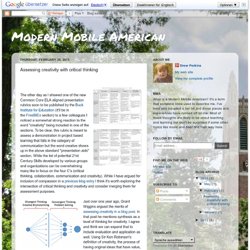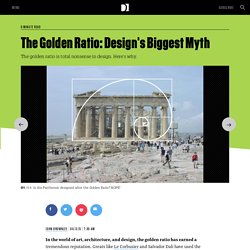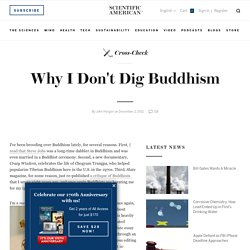

Emily Levine: A trickster's theory of everything. Our brains: predictably irrational. Ignorence. Developing-21st-century-critical-thinkers-infographic-mentoring-minds.jpg (JPEG Image, 500 × 773 pixels) Mastering the economics of life. The real master of knowledge. Assessing creativity with critical thinking. The other day as I showed one of the new Common Core ELA aligned presentation rubrics soon to be published by the Buck Institute for Education (it'll be in the FreeBIEs section) to a few colleagues I noticed a somewhat strong reaction to the word "creativity" being included in one of the sections.

To be clear, this rubric is meant to assess a demonstration in project based learning that falls in the category of communication but the word creative shows up in the above standard "presentation aids" section. While the list of potential 21st Century Skills developed by various groups and organizations can be overwhelming many like to focus on the four C's (critical thinking, collaboration, communication and creativity). Critical Thinking Index Page. Education for Death: The Making of the Nazi (1943) - Animated Propaganda Short Film by Walt Disney. The 6 Grand Illusions That Keep Us Enslaved to the Matrix. Sigmund Fraud, Staff WriterWaking Times “In prison, illusions can offer comfort.” – Nelson Mandela For a magician to fool his audience his deceit must go unseen, and to this end he crafts an illusion to avert attention from reality.

While the audience is entranced, the deceptive act is committed, and for the fool, reality then becomes inexplicably built upon on a lie. Critical Thinking Index Page. Cognitive Psychology. High Order Thinking Chart. Developing-21st-century-critical-thinkers-infographic-mentoring-minds.jpg (JPEG Image, 500 × 773 pixels) 25 Question Stems Framed Around Bloom's Taxonomy. 25 Question Stems Framed Around Bloom’s Taxonomy While critical thinking is a foundation rather than a brick, how you build that foundation depends on the learning process itself: exposing students to new thinking and promoting interaction with that thinking in a gradual release of responsibility approach.

Question stems can be a powerful part of that process no matter where the learner is. Assessment (pre-assessment, self-assessment, formative and summative assessment), prompting and cueing during discussion, etc. 249 Bloom's Taxonomy Verbs For Critical Thinking. Bloom’s Taxonomy’s verbs–also know as power verbs or thinking verbs–are extraordinarily powerful instructional planning tools.

In fact, next to the concept of backwards-design and power standards, they are likely the most useful tool a teacher-as-learning-designer has access to. Why? They can be used for curriculum mapping, assessment design, lesson planning, personalizing and differentiating learning, and almost any other “thing” a teacher–or student–has to do. How to Give Criticism. Logical Paradoxes. Science and Nonduality. In this article standup philosopher Tim Freke articulates the nature of ‘paralogical’ thinking, which is the foundation of the philosophy and practices he shares to guide people to a ‘deep awake’ state.

The supernatural. Agnotology. Study of culturally induced ignorance or doubt Agnotology (formerly agnatology) is the study of deliberate, culturally-induced ignorance or doubt, typically to sell a product or win favour, particularly through the publication of inaccurate or misleading scientific data.[1][2] More generally, the term also highlights the condition where more knowledge of a subject leaves one more uncertain than before.

Coined in 1995 by Stanford University professor Robert N. Proctor,[3] along with linguist Iain Boal,[1][4][5] the word is based on the Neoclassical Greek word agnōsis (ἄγνωσις, 'not knowing'; cf. Attic Greek ἄγνωτος, 'unknown')[6] and -logia (-λογία).[7] Proctor cites as a prime example the tobacco industry's advertising campaign to manufacture doubt about the cancerous and other adverse health effects of tobacco use.[7][8] Agnotology also focuses on how and why diverse forms of knowledge do not "come to be," or are ignored or delayed. History[edit] Origins[edit] Isaac Asimov, 1980[12] How to Train Your Mind to Think Critically and Form Your Own Opinions. Debatrix: overtuigingskracht voor professionals, politici & leidinggevenden. Overtuigtip #37 van 381 | Random tip →

4 Factoren die het veranderen van overtuigingen bemoeilijken. Fastcodesign. In the world of art, architecture, and design, the golden ratio has earned a tremendous reputation.

Greats like Le Corbusier and Salvador Dalí have used the number in their work. The Parthenon, the Pyramids at Giza, the paintings of Michelangelo, the Mona Lisa, even the Apple logo are all said to incorporate it. ThinkCERCA Platform Demo. Critical Thinking. What is Critical Thinking?

Critical thinking is the ability to think clearly and rationally, understanding the logical connection between ideas. Critical thinking has been the subject of much debate and thought since the time of early Greek philosophers such as Plato and Socrates and has continued to be a subject of discussion into the modern age. Critical thinking might be described as the ability to engage in reflective and independent thinking. In essence, critical thinking requires you to use your ability to reason. It is about being an active learner rather than a passive recipient of information.
Critical thinkers rigorously question ideas and assumptions rather than accepting them at face value. Critical thinkers will identify, analyse and solve problems systematically rather than by intuition or instinct. Someone with critical thinking skills can: Understand the links between ideas. An Illustrated Book of Bad Arguments. Critical Reasoning for Beginners. Why I Don't Dig Buddhism - Cross-Check - Scientific American Blog Network. I've been brooding over Buddhism lately, for several reasons.

Regular exercise changes the brain to improve memory, thinking skills. There are plenty of good reasons to be physically active. Big ones include reducing the odds of developing heart disease, stroke, and diabetes. Maybe you want to lose weight, lower your blood pressure, prevent depression, or just look better. Here’s another one, which especially applies to those of us (including me) experiencing the brain fog that comes with age: exercise changes the brain in ways that protect memory and thinking skills.
In a study done at the University of British Columbia, researchers found that regular aerobic exercise, the kind that gets your heart and your sweat glands pumping, appears to boost the size of the hippocampus, the brain area involved in verbal memory and learning. Do All Cults, Like All Psychotherapies, Exploit the Placebo Effect? - Cross-Check - Scientific American Blog Network. I'm a child of the Sixties, so I've known lots of people over the years who've joined cults. One of the most popular was Transcendental Meditation, which the Indian-born guru Maharishi Mahesh Yogi began marketing to westerners, notably the Beatles, a half century ago.
TM is making a comeback, in large part because of the efforts of David Lynch, director of Eraser Head, Blue Velvet, Twin Peaks and other creepy classics. Over the past eight years he has become a global evangelist for TM. According to a recent New York Times Magazine profile, Lynch believes that TM can yield "true inner happiness. " Critical thinking web. To begin our study of predicate logic, we start with the concept of a singular term.
A singular term in a natural language is a linguistic expression that has the function of referring to or naming a particular object or thing. For our present purpose we shall take singular terms to include : Common Science Myths That Most People Believe. There are a number of old wives’ tales out there regarding some basic scientific principles. Though most of them were refuted years ago, these rumors just won’t go away. Here are some of the top myths floating around out there that just aren’t true: We only use 10% of our brains. It's true that there’s a great deal we don’t know about the brain, but we certainly do know that we use our entire brain. Even if we didn’t have a wealth of data from brain scans to show this 10% figure is completely false (we do), it doesn’t even make sense using basic logic.
Additionally, there is no evidence that someone was ever diagnosed with a brain tumor but was told: “Great news! THE MARVELS AND THE FLAWS OF INTUITIVE THINKING: Edge Master Class 2011. We ended up studying something that we call "heuristics and biases". Those were shortcuts, and each shortcut was identified by the biases with which it came.
The biases had two functions in that story. They were interesting in themselves, but they were also the primary evidence for the existence of the heuristics. Neuroscientists show ability to plant false memories. The phenomenon of false memory has been well-documented: In many court cases, defendants have been found guilty based on testimony from witnesses and victims who were sure of their recollections, but DNA evidence later overturned the conviction. In a step toward understanding how these faulty memories arise, MIT neuroscientists have shown that they can plant false memories in the brains of mice. They also found that many of the neurological traces of these memories are identical in nature to those of authentic memories.
"Whether it's a false or genuine memory, the brain's neural mechanism underlying the recall of the memory is the same," says Susumu Tonegawa, the Picower Professor of Biology and Neuroscience and senior author of a paper describing the findings in the July 25 edition of Science. Neuroscientists have long sought the location of these memory traces, also called engrams.
Lead authors of the paper are graduate student Steve Ramirez and research scientist Xu Liu. Ten Takeaway Tips for Teaching Critical Thinking. Suggestions from educators at KIPP King Collegiate High School on how to help develop and assess critical-thinking skills in your students. Identify a Lie with 6 Simple Questions. CER. Critical thinking.
Three Steps to Critical Thinking. Critical Thinking. Critical Thinking. Critical thinking skills. Critical Thinking: Issues, Claims, Arguments. Audience Response Systems. Critical Thinking Skills. Claim, Evidence, Reasoning; CER. C.E.R. Rubric. FA: Is It a Claim? The Battle for Your Mind: Brainwashing Techniques. Authoritarian followers Mind Control Subliminals. FA: Is It Evidence? Criteriaforsuccessfularguments. Claim Evidence Reasoning. Risk Rage – Why Do Smart People Believe Dumb Things? Mind Control. Top 10 Thinking Traps Exposed. Our minds set up many traps for us. Unless we’re aware of them, these traps can seriously hinder our ability to think rationally, leading us to bad reasoning and making stupid decisions.
15 Styles of Distorted Thinking. 16 basic principles of mass indoctrination.